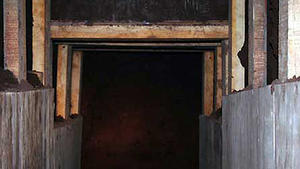Border securityTunnels, boats used to defeat stronger border security
As border fences along the U.S.-Mexico border get stronger, smugglers are attempting to dodge increased security by tunneling and sailing their way into the United States; tunneling activity has increased 65 percent in the past two years, and a multi-agency team has already made 786 sea smuggling arrests, up from just 400 last year

Drug smuggling tunnel discovered in Nogales, Arizona // Source: news.sky.com
As violence along the United States-Mexico border continues to escalate, the U.S. government is beefing up border security. On Monday, DHS secretary Janet Napolitano touted the success of those efforts.
Brandon Scott reports for CBS News that border authorities are facing a troubling — and growing — problem. As border fences get stronger, smugglers are attempting to dodge increased security by tunneling and sailing their way into the United States.
Since 2001, 111 tunnels have been discovered along the southern border, with tunneling activity increasing 65 percent in the past two years.
One tunnel, discovered thirty feet below the surface in Tijuana, is an elaborate passageway complete with electricity and ventilation, upwards of six feet tall, and wide enough for two people to walk side-by-side.
Uncovering the tunnels is a challenge, according to Tim Durst of U.S. Customs and Border Protection (CBP). Durst said the effort to find and shut down border tunnels is “baby steps at this point.”
“It’s basically the cartel and smuggling organizations’ mechanism to go around the increased presence along the port of entries,” Durst said.
Durst heads a Tunnel Task Force, and he and his team have been busy trying to find tunnels before smugglers can reach the United States.
Scott writes that if it is tough to find smugglers underground, it can be an even bigger challenge on the open water, along the U.S.-Mexico coastline, where there are no border checkpoints, no border crossings.
Coast Guard Lt. Jamin Stortz, who patrols the Pacific coast, said, “Smugglers are exploiting the coastline,” often hiding in plain sight on sailboats and luxury yachts.
This year a multi-agency team has already made 786 smuggling arrests, up from just 400 last year.
“A new wave of challenges — that fences can’t contain,” Scott notes.
